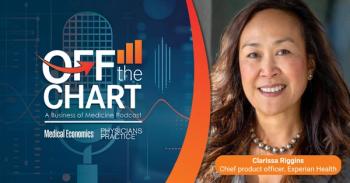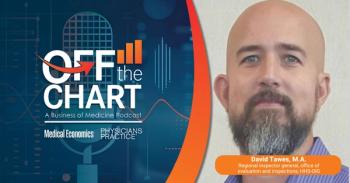
Your Money: Retirement Planning for the Above-Average
Average Americans can do quite well with conventional tax and retirement strategies. But you're not an average American.
In October, we reminded you that physician families have substantially greater income than the average American family - and a greater liability risk - in the first of our four-part series explaining why being a physician makes you different in ways that traditional financial advisers often overlook. In this issue, we'll focus on taxation- and retirement-related threats that physicians face more than most people.
(Did you miss Part One? Read it
Risk: Wasting time and money on retirement plans that will be inadequate to you and worth only 20 cents on the dollar to your children. This is perhaps the single most important area of financial planning for doctors to address once they understand that they are not average. Typical retirement plans are great for rank-and-file employees. They are forced to put away funds for retirement. Their employers may match some percentage of those funds. The money grows for them and then is available after they reach age 59.5. When they die, there even may be a very modest amount remaining for their heirs.
As an employer, you are responsible for those matching contributions (if your practice offers a company-match program, that is). These can be very significant if you have a large employee base. You are also the person who will be responsible (in other words, liable) if employees do not receive the proper allocations or contributions from your practice. Even if the plan administrator makes a mistake, you ultimately may feel the wrath of the U.S. Labor Department if your employees are treated unfairly by the plan.
Further, the payout to you for your own retirement program may not set you up as well as you think. Suppose you contribute $40,000 per year, starting at age 35. At 7 percent annual interest, your nest egg will be worth only $2 million by the time you hit age 60. If that's when you want to retire, you may have to live on a monthly pretax income of $12,000 to $15,000. If you factor in inflation, that may be worth only $6,000 to $8,000 pretax in today's dollars. Then you'll fork over an additional 40 percent or so in taxes.
We sometimes ask 35-year-old doctors if they think they can retire on $3,000 to $6,000 a month after taxes. Didn't think so. You need supplemental planning to reach the retirement level you desire.
And there's another problem. Let's say that you accumulate significant nonpension assets and these assets are enough to support your quality of life in retirement. It's not unusual for a physician to accumulate $1 million to $2 million in retirement plan assets that neither he nor his spouse will spend during their lifetimes. When you die, these assets are taxable at income- and estate-tax rates. It's possible in some states for this "double tax" to total 70 percent to 80 percent. In other words, if your family doesn't spend this money, the government will. This is yet another problem with traditional retirement planning that doesn't affect "average" Americans, but it certainly does affect you.
Suggestion: Do not rely on traditional retirement planning. Nontraditional, nonqualified retirement planning can offer higher-income individuals opportunities to put away more money annually. In addition, these plans can be much more discriminatory than traditional qualified plans. Whether you are using an executive benefit plan for doctors only or a captive insurance company, you could possibly deduct $100,000 to $1.2 million annually. You won't be under any Labor Department scrutiny because these plans are not subject to such regulations. Further, you will have access to your funds before age 59.5 if you like, you will not be forced to take withdrawals at age 70.5 if you don't want to, and these plans will not be taxed at rates up to 70 percent or 80 percent when you die.
Nontraditional, nonqualified plans vary significantly in their design, scope, and applicability. Some plans work great for smaller practices with one or two partners. Others work best in practices with three to 20 partners. Still others may work best for even larger practices. Our colleague David Mandell wrote about them at length in the September issue of Physicians Practice. (See
Next month, we'll examine how to make the most of tax deductions.
Christopher R. Jarvis, MBA, is a lecturer and author of "Wealth Protection, MD." He is also a cofounder of The Wealth Protection Alliance, a nationwide network of elite independent financial advisory firms whose goal is to help clients build and preserve their wealth. Charles P. KinCannon, JD, LLM, is a certified wealth consultant with the Heritage Institute and provides sophisticated business planning to physicians around the country. Jarvis and KinCannon can be reached at 800 554 7233 or via
This article originally appeared in the November/December 2006 issue of Physicians Practice.
Newsletter
Optimize your practice with the Physicians Practice newsletter, offering management pearls, leadership tips, and business strategies tailored for practice administrators and physicians of any specialty.








